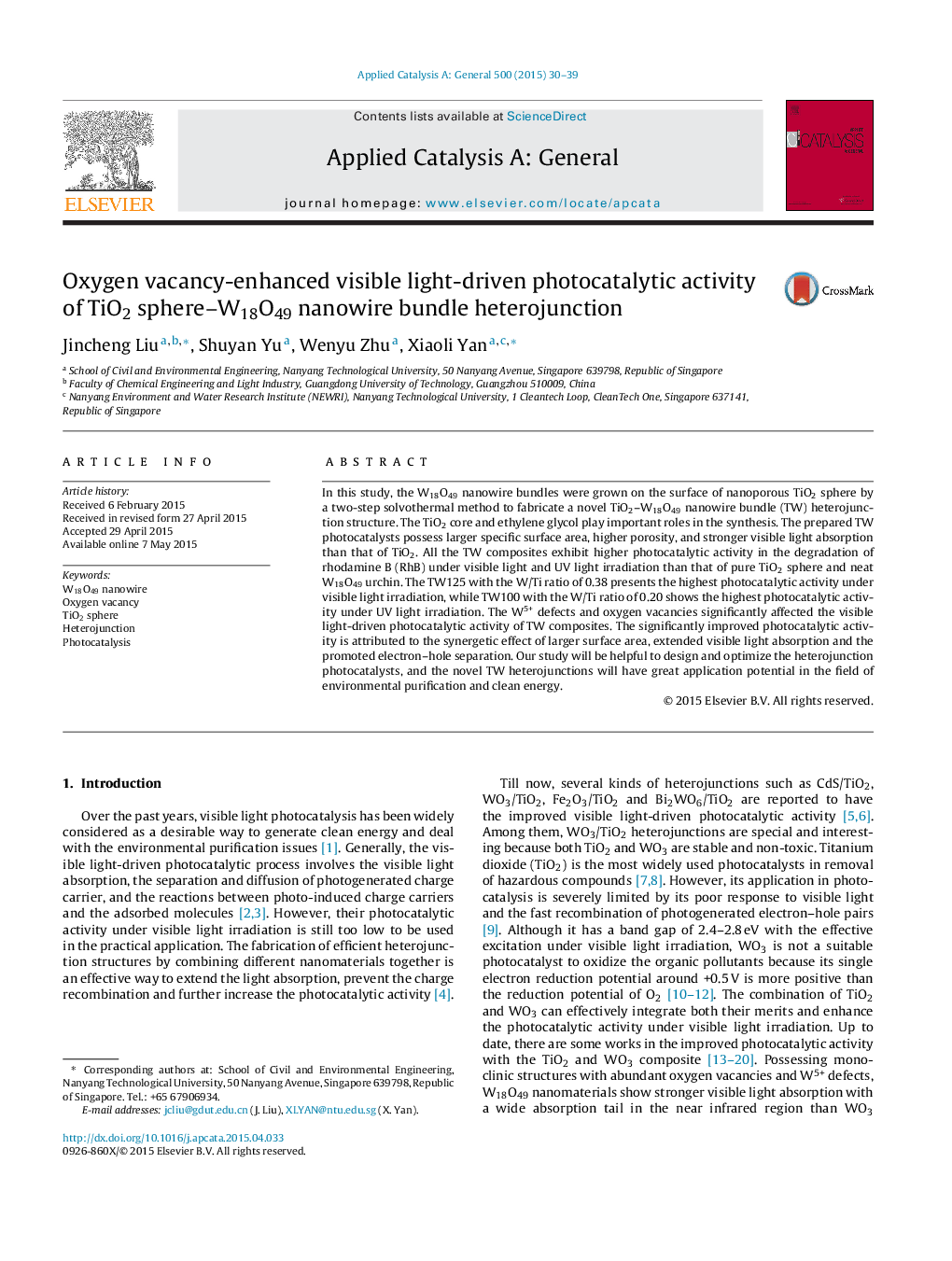| کد مقاله | کد نشریه | سال انتشار | مقاله انگلیسی | نسخه تمام متن |
|---|---|---|---|---|
| 39143 | 45808 | 2015 | 10 صفحه PDF | دانلود رایگان |

• TiO2–W18O49 nanowire bundle heterojunction was prepared through a two-step solvothermal method.
• Strong visible light adsorption was resulted from the oxygen vacancies.
• The optimized W/Ti ratio is 0.38 for the visible light-driven photocatalysis.
• The degradation rate constants under visible light irradiation are 3 times of pure TiO2.
• The oxygen vacancies significantly affect the visible light-driven photocatalytic activity.
In this study, the W18O49 nanowire bundles were grown on the surface of nanoporous TiO2 sphere by a two-step solvothermal method to fabricate a novel TiO2–W18O49 nanowire bundle (TW) heterojunction structure. The TiO2 core and ethylene glycol play important roles in the synthesis. The prepared TW photocatalysts possess larger specific surface area, higher porosity, and stronger visible light absorption than that of TiO2. All the TW composites exhibit higher photocatalytic activity in the degradation of rhodamine B (RhB) under visible light and UV light irradiation than that of pure TiO2 sphere and neat W18O49 urchin. The TW125 with the W/Ti ratio of 0.38 presents the highest photocatalytic activity under visible light irradiation, while TW100 with the W/Ti ratio of 0.20 shows the highest photocatalytic activity under UV light irradiation. The W5+ defects and oxygen vacancies significantly affected the visible light-driven photocatalytic activity of TW composites. The significantly improved photocatalytic activity is attributed to the synergetic effect of larger surface area, extended visible light absorption and the promoted electron–hole separation. Our study will be helpful to design and optimize the heterojunction photocatalysts, and the novel TW heterojunctions will have great application potential in the field of environmental purification and clean energy.
Figure optionsDownload high-quality image (84 K)Download as PowerPoint slide
Journal: Applied Catalysis A: General - Volume 500, 5 July 2015, Pages 30–39